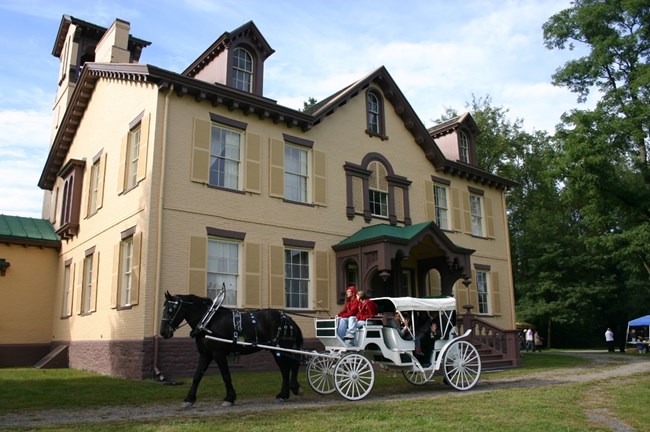Learn about NRCAs
The Natural Resource Condition Assessment (NRCA) Program provides framework, funding, and publishing support to parks to aid in the synthesis and documentation of natural resource conditions. Condition assessment reports are a tool to describe selected park resources, and record a snapshot of their current condition, identify trends, and identify potential or current threats and stressors. Understanding the condition and trend of natural resources is key for parks and NPS planners to appropriately prioritize and allocate stewardship resources.

NPS Photo
Natural resources lying within the authorized park boundary include prime agricultural soils, a segment of Kinderhook Creek, a vegetated escarpment, wetlands, six man-made ponds, and habitat for many species including several species of conservation interest. Overall, however, the property and landscape retain its historic integrity in association with Van Buren.
Traditional NRCA Report: 2019
The Natural Resource Condition Assessment for Martin Van Buren National Historic Site was published in 2019, as a collaborative effort between the NPS and the State University of New York. The team chose five resources to be evaluated in this assessment:
For other reports and natural resource datasets visit the NPS Data Store.
Source: NPS DataStore Collection 7765 (results presented are a subset). To search for additional information, visit the NPS DataStore.
- Air quality |
||
- Water |
||
- Gology and soils |
||
- Biological integrity |
||
- Landscapes |
Assessment of natural resource condition in the park reflects condition supportive of a variety of native flora and fauna within the park’s wetlands, riparian areas, and agricultural matrix. Due to the park’s relatively small size, the condition of natural resources is particularly affected by stressors originating outside of park boundaries, including climate change, air pollution, road impacts, invasive species and regional wildlife trends. This assessment revealed several data gaps which could be filled by additional park monitoring as funding permits.
Last updated: October 17, 2024
